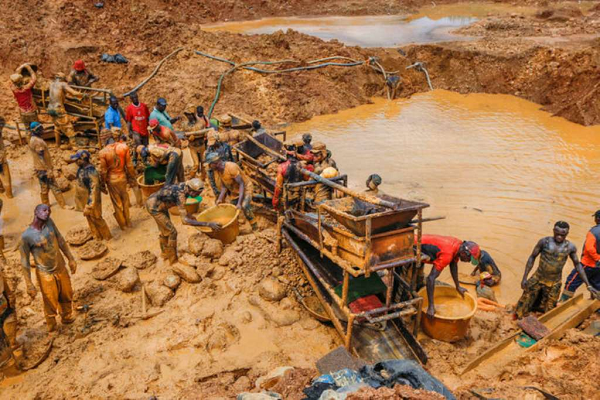Ghana News | Ghana Politics | Breaking News in Ghana

Galamsey must be curbed now
Illegal small-scale mining, popularly referred to as ‘galamsey’, poses serious threats to human life and the environment.
In many mining communities in Ghana, wanton environmental destruction and pollution of water bodies are worrying developments from illegal mining.
Advertisement
While efforts have been made by civil society organisations and government agencies, including the security agencies, to clamp down on illegal mining, the challenges wrought by ‘galamsey’ persist and remain burdensome, sometimes with fatal outcomes.
While there is unanimity that illegal mining activities put mining communities and human lives at risks, the quest for sustained efforts to address the crisis has proved quite elusive.
Government interventions through the security agencies have often been reactive — usually when protests reach a crescendo, following sustained media coverage of the menace, but after a while, any gains made are eroded as the miners resume their operations with gusto.
The media have, over the years, played a very important role in highlighting the issues related to the menace.
The issue of galamsey seems to attract more critical media reviews because of the extent of damage as a result of the highly mechanised nature of modern galamsey operations, the direct result of the influx of foreigners and the introduction of some modern machinery into the operations of small-scale miners.
Thus, what used to be simple surface mining by indigenes of mining communities to help improve their livelihoods has been transformed into highly mechanised operations, with more devastating effects on the environment and poor management of the after effects of the operations.
To tackle the menace of illegal mining in the country, the Daily Graphic proposes the use of the Forest Landscape Restoration (FLR) approach as a long-term measure.
This approach will restore degraded landscapes, such as mined sites, by addressing the socio-economic, ecological and environmental dimensions of reclaiming the degraded lands.
The approach will ensure that economic development and the livelihoods of people are taken care of in a manner that guarantees ecological resilience and the sustainability of the landscape.
Again, given the adverse implications of galamsey on the Ghanaian society as a whole, it will be important that political parties desist from pronouncements that impliedly underscore their endorsement of illegal mining activities in election periods.
For us, claims that the galamsey phenomenon is underpinned by poverty should not, in any way, be countenanced within policy circles, in as much as other social vices (e.g., armed robbery, prostitution, etc) cannot be justified on grounds of high levels of youth unemployment.
Given the substantial influence that chiefs continue to wield over land and rural populations, it is crucial that chiefs are made part of the anti-galamsey crusade.
In this respect, recent efforts by some paramount chiefs to punish their sub-chiefs for supporting or condoning the activities of illegal miners are steps in the right direction.
It is important that the people in communities where illegal mining is prevalent are actively involved in safeguarding their communities and the environment.
Without a comprehensive approach to the fight against galamsey, the present piecemeal and technocratic approaches to curbing this inherently political problem will continue to yield sub-optimal results.
We must find a long-term solution to the galamsey issue, which has gradually degenerated into a national security problem.




